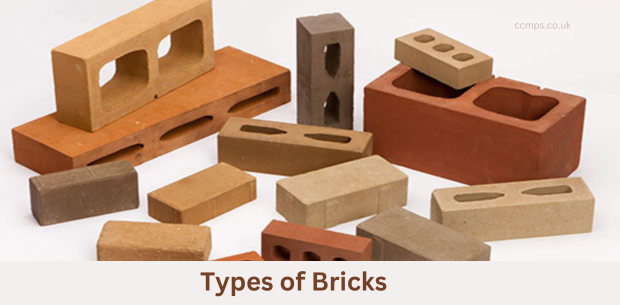Choosing the Perfect Brick: A Deep Dive into Various Brick Types
Bricks, the fundamental building blocks of construction, come in various types, each designed for specific purposes and applications. In this comprehensive guide, we’ll explore the different types of bricks, their characteristics, and which ones are ideal for various construction projects.
What are the Different Types of Brick?
Facing Bricks:
Facing bricks are designed to be visible and provide an aesthetic finish to a structure. They come in various colors, textures, and sizes, allowing for creative and visually appealing architectural designs.
Common Bricks:
Common bricks, known for their versatility, are used in a wide range of construction projects. They are reliable, cost-effective, and suitable for both structural and decorative purposes.
Engineering Bricks:
Engineered for strength and durability, engineering bricks are ideal for load-bearing structures and projects where high compressive strength and low water absorption are crucial.
These bricks are classified into two main categories: Class A and Class B.
Class A Engineering Bricks:
Compressive Strength: Greater than 125N/mm².
Water Absorption: Less than 4.5%.
Class A engineering bricks represent the highest standard, offering exceptional strength and minimal water absorption. They are well-suited for projects that demand the utmost in structural integrity.
Class B Engineering Bricks:
Compressive Strength: Greater than 75N/mm².
Water Absorption: Less than 7%.
Class B engineering bricks, while slightly less robust than Class A, remain a common and reliable choice. With a balance of strength and affordability, they find application in various construction scenarios, providing a cost-effective solution without compromising performance.
Concrete Blocks:
Concrete blocks, also known as concrete masonry units (CMUs), offer strength and stability. They are commonly used in construction for walls, partitions, and other load-bearing elements.
Fire Bricks:
Designed to withstand high temperatures, fire bricks are used in applications where heat resistance is essential, such as fireplaces, kilns, and industrial furnaces.
Air Bricks:
Air bricks, or ventilation bricks, are designed with perforations to allow air circulation. They are commonly used in buildings to provide ventilation and prevent dampness.
What types of bricks are suitable for residential construction?
Selecting the right bricks for house construction is crucial for both structural integrity and aesthetics.
Facing Bricks: Ideal for exterior walls, providing a decorative finish.
Common Bricks: Versatile and cost-effective, suitable for various house construction needs.
Engineering Bricks: For load-bearing structures requiring strength and durability.
How Can Bricks be Categorized?
Bricks by Colour:
Explore the vast array of brick colors available, ranging from traditional reds and browns to contemporary whites and greys. Choose a color palette that complements your design vision.
Bricks by Size:
Different construction projects may require bricks of varying sizes. Learn about standard brick sizes and how to choose the right dimensions for your specific application.
It’s worth noting that brick sizes vary globally, and understanding the dimensions is crucial for precise construction. In the UK, the standard brick size is 215mm x 102.5mm x 65mm. However, a 10mm allowance is typically applied to accommodate mortar joints, resulting in a practical size of 225mm x 112.5mm x 75mm. This adjustment ensures accurate planning and seamless integration with mortar during construction.
Bricks by Shape:
In certain projects, the demand for bricks extends beyond conventional shapes and sizes, particularly in endeavors like block paving. When opting for paving bricks, the preference often leans toward flatter shapes, such as rectangles or squares, readily accessible in the market. For specialized requirements, like crafting custom brick slips, bespoke shapes become essential. Achieving these shapes involves various methods, including cutting with an angle grinder, a circular masonry saw, or employing a hammer and chisel. This flexibility in shaping allows for tailored solutions in diverse construction applications.
Conclusion
Bricks are not just building materials; they are a canvas for architectural expression. Understanding the characteristics and applications of different brick types empowers builders and architects to create structures that are not only functional but also visually stunning. Whether you’re embarking on a residential project or a larger construction endeavor, the right choice of bricks is pivotal to its success.
